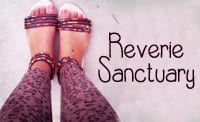I recall the fascination with the colour black (or the complete lack of colour) back in my late teen years which was a signature period of gloom and melancholy. Didn’t take a fashion magazine to convert me into Gothic fashion lover.
The complete maniacal obsession with black took control and soon every piece of my clothing would be in black – which in turn made the task of sorting out the wardrobe a trippy descent into a swirling black hole of despair.
Even now, as I have shed most of the gloom and doom traits, I admit the appeal of the dark black funeral concession fashion still lingers. I just adore the mysterious aura of it (especially the almost vampiristic elements) and it is unbelievably easy to pull off if you’re underlying mood skirts around the morbid and outright hatred for cheerful pastel tones of the mainstream stuff.
But that’s only one side of it, of course. Let’s take a trip down into the key characteristics of Gothic fashion first shall we.
Goth fashion is typically recognized by its complete black clothing, dark hair and makeup. Though now, it’s common to see a splash of other colours such as purples and reds to accentuate the look, black still takes up the most of the background and foreground spaces. The gothic style actually has its roots evolved from the early 80s Gothic rock scene. And is often mistaken for heavy metal fashion which it is not.
The typical appearance of the Gothic lady is her “deathly pallor, backcombed or ratted black hair, ruffled Regency shirts, stovepipe hats, leather garments, spike dog collars, the ensemble accessorized with religious, magical or macabre jewellery (bone earrings, rosaries, pentacles, ankhs, skulls) typically made from silver – according to Simon Reynolds.
In addition to that, other features of the fashion include fishnet stockings, black leather thigh boots and witchy eye make-up.
A statement of revolt against the mainstream “colourful” fashion
“Goth is a revolt against the slick fashions of the 1970s disco era and a protest against the colourful pastels and extravagance of the 1980’s. Black hair, dark clothing and pale complexions provide the basic look of the Goth Dresser. One can paradoxically argue that the Goth look is one of deliberate overstatement as just a casual look at the heavy emphasis on dark flowing capes, ruffled cuffs, pale makeup and dyed hair demonstrate a modern- day version of late Victorian excess.” – Maxim W. Furek, researcher who studied the psychological and sociological aspects of Goth as a lifestyle and culture of certain groups.
These gothic styles are pretty dramatic but we’ll get to the wearable ones in the next post. So what do you guys think about Goth fashion in general? Were you once a Goth teen? Are you still in love with the dark fashion charade? Let me know in the comment section below.
Love this post? Share it with your friends! Follow us for more fashion inspiration:
♥ Twitter ♥ Facebook ♥ Google+ ♥ Bloglovin ♥ Pinterest ♥ Polyvore ♥
© All images are copyrighted by their respective authors.
Here on Fashionista NOW, our one and very own Miss Reverie showcases the latest in fashion trends and its various social implications in our everyday lives. You may read more of her at REVERIE SANCTUARY.


[…] hurt right? For your instant consumption of that information, please proceed to my previous article:Fashionista NOW: Gothic Fashion IntroductionFor the rest of you who want to go straight ahead for some practical wearable/casual Goth fashion […]
Thanks for quoting my book, The Death Proclamation of Generation X. Goth fashion is still alive and well. Learn more at shepptonmyth.com
Thank you for gracing this space with your comment, Max. I appreciated it! Will check out the site. Thank you for the intro.